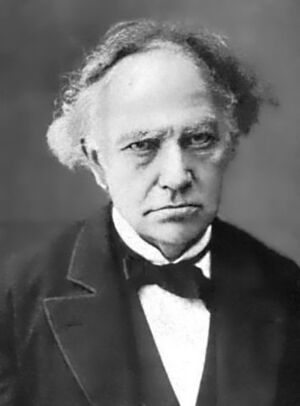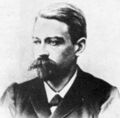Charles Hermite (nonfiction): Difference between revisions
No edit summary |
No edit summary |
||
| Line 15: | Line 15: | ||
== In the News == | == In the News == | ||
<gallery | <gallery> | ||
File:Thomas Joannes Stieltjes.jpg|link=Thomas Joannes Stieltjes (nonfiction)|[[Thomas Joannes Stieltjes (nonfiction)|Thomas Joannes Stieltjes]] writes to Hermite concerning celestial mechanics, but the subject quickly turned to mathematics. | File:Thomas Joannes Stieltjes.jpg|link=Thomas Joannes Stieltjes (nonfiction)|[[Thomas Joannes Stieltjes (nonfiction)|Thomas Joannes Stieltjes]] writes to Hermite concerning celestial mechanics, but the subject quickly turned to mathematics. | ||
</gallery> | </gallery> | ||
Revision as of 07:54, 5 February 2017
Prof Charles Hermite FRS FRSE MIAS (December 24, 1822 – January 14, 1901) was a French mathematician who did research on number theory, quadratic forms, invariant theory, orthogonal polynomials, elliptic functions, and algebra.
Hermite polynomials, Hermite interpolation, Hermite normal form, Hermitian operators, and cubic Hermite splines are named in his honor.
One of his students was Henri Poincaré.
He was the first to prove that e, the base of natural logarithms, is a transcendental number. His methods were later used by Ferdinand von Lindemann to prove that π is transcendental.
In a letter to Thomas Joannes Stieltjes in 1893, Hermite remarked:
I turn with terror and horror from this lamentable scourge of continuous functions with no derivatives.
On 14 July of 1856, Hermite was elected to fill the vacancy created by the death of Jacques Binet in the Académie des Sciences.
In the News
Thomas Joannes Stieltjes writes to Hermite concerning celestial mechanics, but the subject quickly turned to mathematics.
Fiction cross-reference
Nonfiction cross-reference
- Ferdinand von Lindemann (nonfiction)
- Henri Poincaré (nonfiction)
- Thomas Joannes Stieltjes (nonfiction)
External links:
- Charles Hermite @ Wikipedia

